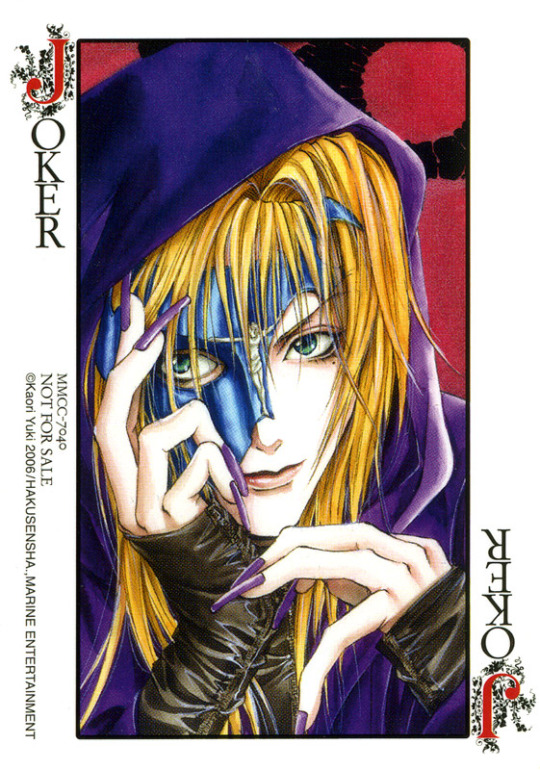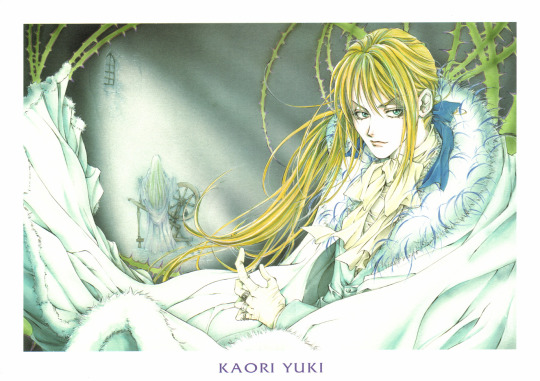#ludwig revolution
Text
ROUND 1B! MATCH 8 OUT OF 8

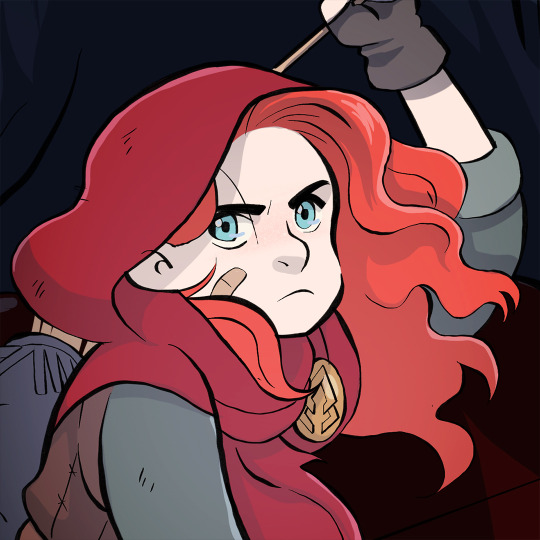
Propaganda Under the Cut:
Lisette:
They shouldn’t win.
This manga is kind of obscure (I think) which is why I think that it would be cool/funny if she won. Or at least got far in the tournament. Come on guys I know that we can do it.
Honestly I don't remember much about this manga because I haven't read it in years but I remember that she was tricked into killing her family by the main character who is like supposed to be an edgy subversion of a fairy tale prince. She's called red riding hood because her clothes are covered in blood In the course of the manga she's a mercenary that wants to get back at the main character for her parents murder.
Scarlet:
She's a feisty young girl determined to be the first female warrior (red hood) in her kingdom. Doesn't take shit from anybody, and definitely overconfident in her own abilities lol. but she'll get there. She'll do anything to protect the people she loves.
#red riding poll#round 1#round 1b#lisette#ludwig revolution#ludwig kakumei#scarlet#the red hood#gabriel santos#red riding hood#little red riding#polls#poll bracket#poll tournament#character polls#this one isn't a specific pair up i made i just didn't know who else to put these guys against#battle of the leftovers lol
12 notes
·
View notes
Note
Okay. Which Kaori Yuki character is your favourite and why? Gush as much as you like.
Oh there is so many!! (thanks for the ask!)
I really like Bloody Alice from Alice in Murderland cause she is sooo badass !!

I also really like Sorath from Devil's lost Soul. I think his father relationship with Nonoha is cute !
I also like Cain, from the Count Cain series, he is a cool protagonist.
But my absolute fav is....; LUI !!
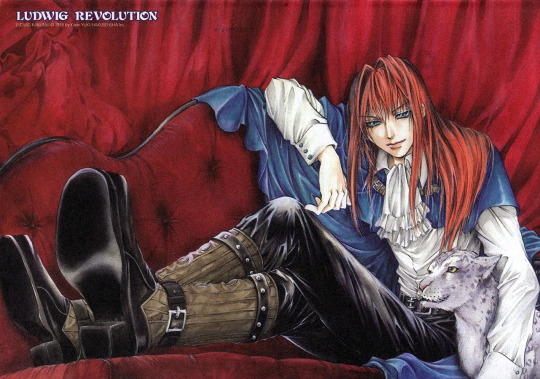
He is such a funny character even if he is the definition of "Prince Uncharming" lol. Kaori yuki never failed to make me laugh with that guy's macabre humor. Moreover, I love how his whole journey across once upon a Land is about him learning to be more then the egoistic yet clever prince he was at the begining and he ends up trying to do the best for his country !
I wish I can draw him someday (◕‿◕✿)
Thanks for the ask. Now I am curious, who is your fav anon ? nun
12 notes
·
View notes
Text
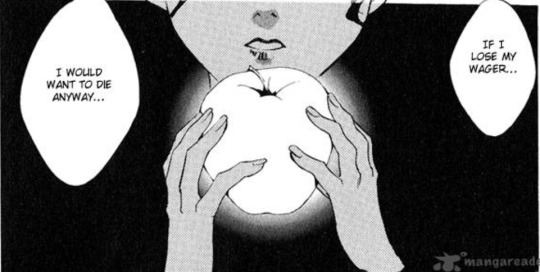
21 notes
·
View notes
Text

9 notes
·
View notes
Text

#reading#manga#anime#ludwig Revolution#nerdy#alternative#black#gaming#book#fairytale#villain#manga fairytale
7 notes
·
View notes
Text
The most precious treasures are the ones you cannot reach.
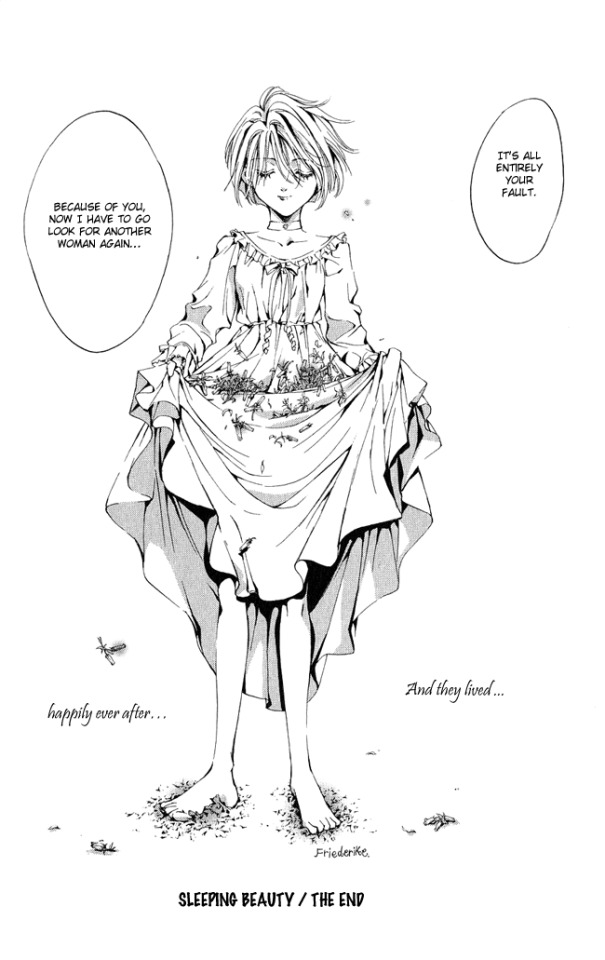
We can all agree that Sleeping Beauty is among, if not the best chapter of Ludwig Kakumei series. Not only because of its bittersweet poetic spin, but also its lasting impact on the rest of the series.
"Why are princes all nice guys in fairy tales? And princesses beautiful and pure, waiting to be rescued?" Using the premise of the original tales, the author deconstructed the conventional cliches and reconstructed her own Grimm's world with their shattered illusions.
Sleeping Beauty chapter started as it's usually told, flavored by macabre and plot twists in classic Kaori fashion. When princess Friederike was born, she received the blessings of 12 witches. The 13th witch, uninvited, was enraged. She cursed Friederike doom by a spindle on her 15th birthday. The 12th witch, not having made her blessings, twisted the curse: She wouldn't die, only fell asleep, until a true love kiss awakened her from slumber.
That's where the similarities draw to an end. Princess Friederike actually had a complex personality not cut out of cardboard. Since birth, she desperately pushed herself to be perfect in everyway, but no one acknowledged her apart from her superficial status and beauty. On her 15th birthday, her world fell apart as she discovered the blessings, coupled with parent issues, drove her to the tower to prick her fingers on the spinning wheel. She hoped she would be fine and they'd all turn out to be an ugly lie, but well, she fell asleep. Soon the castle was covered in thorns, and many years passed.
That's where our perfect and terrible prince appeared. Ludwig, handsome, cunning, and irredeemably perverted, was at the first destination of his wife-hunting journey. He found Friederike pocket watch (buried in her spiral), which became the bridge guiding their dreams to each other.
Honestly, I don't know what about Friederike moved the capricious prince's heart. The purity and vivacity of the silver-haired, bare-feet maiden playing on a bed of flowers? Fragile yet stubborn, naive yet plagued by doubts? Or was it their mutual loneliness? The harm their thorns inflicted on others - misguided attempts to protect themselves from this crapsack world? There is no doubt that the Prince saw himself in the Sleeping Beauty, though. The speech he gave to her, after hearing her story, was cruel and uncaring on the surface, while deep down he thought about himself, a child alone with his shiny toys.
Never had Friederike been loved by anyone as her true self. Never had Ludwig truly loved anyone but himself. On that fateful day, the word "never" changed into "for the first time".
Thus, he regretted hurting her - "For the first time since I was born, I hate the cruelty of my own thorns."
(In a way, it's hilarious that Friederike was the opposite of Ludwig (presumably) ideal type. He liked big cups, Friederike was an LCD. He boasted about his women collection for their quietness and obedience, Friederike was proud and animated. I get a feeling that Ludwig was actually drawn to good virtues (aside from beauty). He "loved" Blanche in her deep coma state, but soon lost interest when she woke up and revealed her vile nature. He gave up his necrophilia hobby after Blanche, also the only princess we met before Friederike. He didn't dislike Amalie, found Rapunzel more beautiful after her giving birth and working, and plenty other examples later in the story.)
Cliche or not, true love did change Ludwig for the better. When the chapter begins, he complained the thorns would damage his beautiful nails. As the story was rushing to the end, about the bleeding nails when he tried to reach his love, Ludwig spat "I won't die from a broken nail or two." - which statement completely shred away Lui's shallow and hedonistic mask. The narrative gradually shifted back to the original fantastical prompt.
The Prince overcame the thorns and delivered the true love kiss, awakening the Princess from eternal slumber.
And they lived happily ever after, till death do they parted.
The beauty of this story lies in its tragic conclusion. Despite everything, the Prince cannot get his happy ending. It served as some poetic justice, I suppose, as Ludwig had committed a lot of horrible debauchery prior to his encounter with Sleeping Beauty.
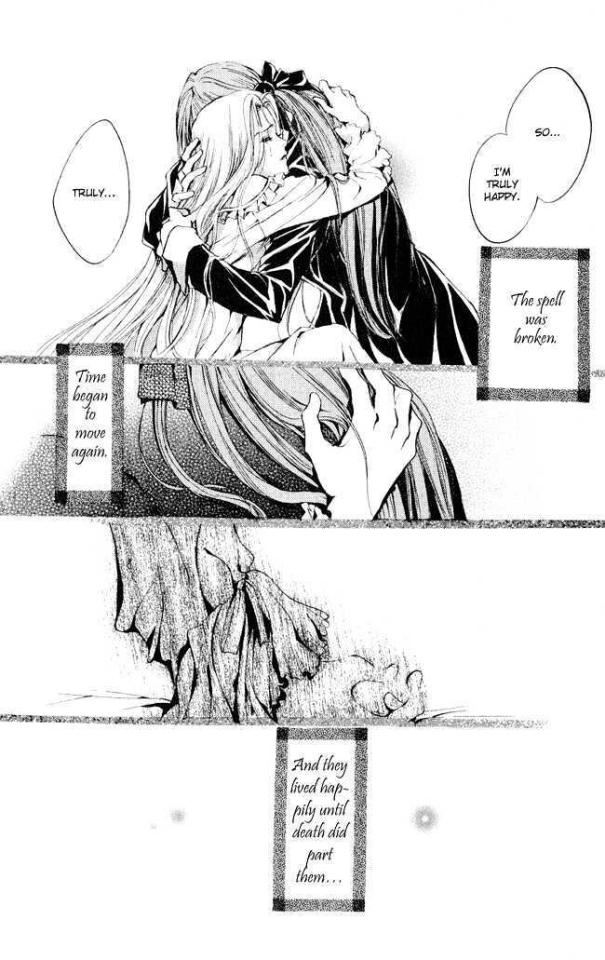
Friederike was the only person Ludwig truly wanted, and the one he could never have. She'll forever remain an illusion, an ideal, a dream he can never forget.
1 note
·
View note
Text
Wellington’s Victory being one of Beethoven’s worst pieces gives me great satisfaction
#even Wellington hated it#lmao#napoleonic era#napoleonic#first french empire#french empire#Beethoven#ludwig van beethoven#Wellington#19th century#napoleon#napoleon bonaparte#history#classical music#composers#napoleonic wars#frev#french revolution#composer#classical music composers#classical composers#1800s#text post
37 notes
·
View notes
Text
AMC's Turn robbed us of scenes with iconic Revolutionary War women like Lucy Knox or Molly Pitcher.
#revolutionary war#turn amc#lucy knox#molly pitcher#molly ludwig hays#women of the Revolutionary War#american revolution
8 notes
·
View notes
Photo
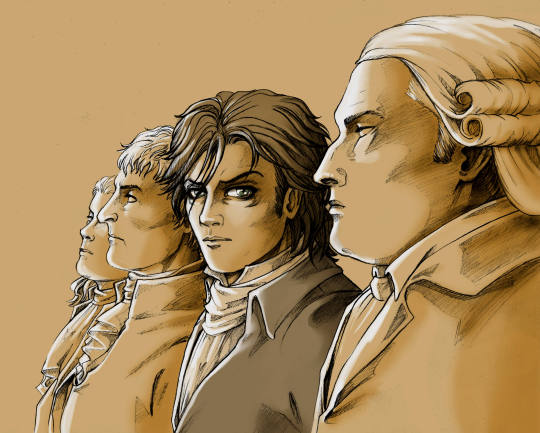
-Student and teachers-
Inspired by @gotterfunkchen
27 notes
·
View notes
Text
Ivan and Phoebe by Oksana Lutsyshyna
Ivan and Phoebe is a novel about a revolution of consciousness triggered by very different events, both global and personal. This is a book about the choices we make, even if we decide to just go with the flow of life. It is about cruelty, guilt, love, passion – about many things, and most importantly, about Ukraine of the recent past, despite or because of which it has become what it is today.
The story told in Oksana Lutsyshyna’s novel Ivan and Phoebe is set during a critical period – the 1990s. In the three decades that have passed since gaining independence, Ukraine has experienced many socio-political, economic, and cultural changes that have yet to be fully expressed. The Revolution of Dignity in 2014 marked a pivotal moment in the country’s history, as it signaled a shift towards European integration and a strong desire to distance itself from Moscow. Prior to this, Ukrainian culture had remained overshadowed by Russian influence, struggled to compete for an audience and was consequently constrained in exploring vital issues.
77 days of February. Living and dying in Ukraine
"77 Days," is a compelling anthology by contributors to Reporters, a Ukrainian platform for longform journalism. The book, published in English as both an e-book and an audiobook by Scribe Originals.
"77 Days'' offers a tapestry of styles and experiences from over a dozen contributors, making it a complex work to define. It includes narratives about those who stayed put as the Russians advanced, and the horror they encountered, like Zoya Kramchenko’s defiant "Kherson is Ukraine," Vira Kuryko’s somber "Ten Days in Chernihiv," and Inna Adruh’s wry "I Can’t Leave – I’ve Got Twenty Cats." The collection also explores the ordeal of fleeing, as in Kateryna Babkina’s stark "Surviving Teleportation '' and "There Were Four People There. Only the Mother Survived."
It also highlights tales of Ukrainians who created safe havens amidst the turmoil, such as Olga Omelyanchuk’s "Hippo and the Team," about zookeepers safeguarding animals in an occupied private zoo near Kyiv, and one of Paplauskaite’s three pieces, "Les Kurbas Theater Military Hostel," depicting an historic Lviv theater turned shelter for the displaced, including the writer/editor herself.
In the Eye of the Storm. Modernism in Ukraine 1900’s – 1930’s
This book was inspired by the exhibition of the same name that took place in Madrid, at the Museo Nacional Thyssen-Bornemisza, and is currently at the Museum Ludwig, located in Cologne, Germany.
Rather than being a traditional catalogue, the publishers and authors took a more ambitious approach. Rather than merely publishing several texts and works from the exhibition, they choose to showcase the history of the Ukrainian avant-garde in its entirety – from the first avant-garde exhibition in Kyiv to the eventual destruction of works and their relegation to the "special funds" of museums, where they were hidden from public view.
These texts explain Ukrainian context to those who may have just learned about the distinction between Ukrainian and Russian art. Those "similarities" are also a product of colonization. It was achieved not only through the physical elimination of artists or Russification – artists were also often forced to emigrate abroad for political or personal reasons. Under the totalitarian regime, discussing or remembering these artists was forbidden. Archives and cultural property were also destroyed or taken to Russia.
"The Yellow Butterfly" by Oleksandr Shatokhin
"The Yellow Butterfly" is poised to become another prominent Ukrainian book on the themes of war and hope. It has been listed among the top 100 best picture books of 2023, according to the international art platform dPICTUS.
The book was crafted amidst the ongoing invasion. Oleksandr and his family witnessed columns of occupiers, destroyed buildings, and charred civilian cars. Shatokhin describes the book’s creation as a form of therapy, a way to cope with the horrors. "During this time my vision became clearer about what I wanted to create – a silent book about hope, victory, the transition from darkness to light, something symbolic," he explains.
Although "The Yellow Butterfly" is a wordless book, today its message resonates with readers across the globe.
A Crash Course in Molotov Cocktails by Halyna Kruk
A Crash Course in Molotov Cocktails is a bilingual poetry book (Ukrainian and English) about war, written between 2013 and 2022, based on Halyna’s experience as an author, volunteer, wife of a military man and witness to conflict.
The Ukrainian-speaking audience is well-acquainted with Halyna Kruk – a poet, prose author and literature historian. Kruk is increasingly active on the international stage, with her poetry featured in numerous anthologies across various languages, including Italian, French, Swedish, Norwegian, Portuguese, Spanish, Polish, English, German, Lithuanian, Georgian and Vietnamese.
For an English-speaking audience, her poetry unveils a realm of intense and delicate experiences, both in the midst of disaster and in the anticipation of it. The poems are succinct, direct, and highly specific, often depicting real-life events and individuals engaged in combat, mourning, and upholding their right to freedom.
130 notes
·
View notes
Photo

Women in the American Revolution
In Colonial America, women were discouraged from taking an interest in politics and were instead expected to focus only on traditionally 'feminine' matters, such as homemaking and childrearing. However, such gender roles were challenged during the American Revolution (1765-1789), when women played a crucial role in achieving the independence of the United States.
From the very first signs of tension between the Thirteen Colonies and Great Britain, colonial women discovered their political voice. Women were the driving force behind boycotts of British imports, shunning British tea in favor of local herbal substitutes, and holding spinning bees to reduce dependence on British cloth. Female writers, such as Mercy Otis Warren and Phillis Wheatley, helped turn public opinion against British rule, while hundreds of women accompanied the Continental Army to perform essential duties like washing, nursing, and cooking; some women, like Margaret Corbin, Mary Ludwig Hays, and Deborah Sampson, even took up arms and fought against the British. Although women were not viewed as politically equal to men after the war, their involvement proved to be a vital first step in the long struggle for women's rights in the United States.
Role of Women in Colonial America
In October 1608, the 'second supply' of English settlers arrived at the Jamestown Colony of Virginia to supplement the population of original settlers. Among these new arrivals was Thomas Forrest, a gentleman financier, who was accompanied by his wife, a woman listed in the ship's manifest only as 'Mistress Forrest', and her maid, Anne Burras. Mistress Forrest and Anne Burras were the first two English women to settle in Jamestown; Burras would marry later that year and earn the additional distinction of becoming the first English woman to give birth in Virginia. English women continued to sporadically arrive in Jamestown over the course of the next decade until 1619 when the Virginia Company decided to send large groups of women to foster a self-sustaining population. In 1620, 90 single women, many of them from poor families, arrived in Virginia as the first of the so-called Jamestown brides, or 'tobacco brides'. They were married off to Jamestown's male settlers, each of whom paid the Virginia Company a dowry of 120-150 pounds of tobacco. Additional groups of Jamestown brides continued to arrive in the following years.
Faced with this growing population of women, the colonists of Jamestown implemented a gender hierarchy similar to that which existed in England. This revolved around the doctrine of coverture, which stipulated that once a woman was married, she was under the complete authority of her husband and no longer enjoyed an independent legal status. A married woman, or feme covert, was legally considered to be one with her husband; she could no longer own property or sign contracts, and any money she earned belonged to her husband. Once a woman married, she was usually confined to the role of homemaker, devoting her hours to cleaning, cooking, ironing, sewing, and gardening. Divorce was difficult to obtain and was often only permissible if a pre-existing condition rendered the initial marriage invalid. As a result, many colonial women felt anxiety about marriage, with one woman referring to marriage as a 'dark leap' from the familiarity of her parents' house into an unknown future controlled by a man whose personality she may have misjudged (Norton, 42). Still, married life was more desirable than remaining a single woman – or feme sole – for too long, as spinsters were often placed near the bottom of the social hierarchy.
Of course, the status of colonial women varied from colony to colony, and widely depended on social class. Wealthy women, for instance, were usually better educated than lower-class women, as were women from Puritan New England who were often taught how to read in order to study the Bible. But, by and large, women were expected to remain within the 'feminine sphere' and to display only feminine traits such as modesty, cheerfulness, patience, and chastity. They were discouraged from expressing any interest in subjects that were considered masculine, particularly politics; attempts by colonial women to involve themselves in politics were met with punishment, as was the case with Anne Hutchinson, who was banished from Massachusetts in 1637 after challenging the authority of male religious leaders. But, as historian Mary Beth Norton points out, the advent of the American Revolution lent colonial women a political voice for the first time, helping to spark the slow progression of women's rights in the US.
Continue reading...
24 notes
·
View notes
Text

#ludwig kakumei#ludwig revolution#manga#ludwig#shoujo#comics#manga panel#anime#shoujo manga#lovers#mangacaps
6 notes
·
View notes
Text
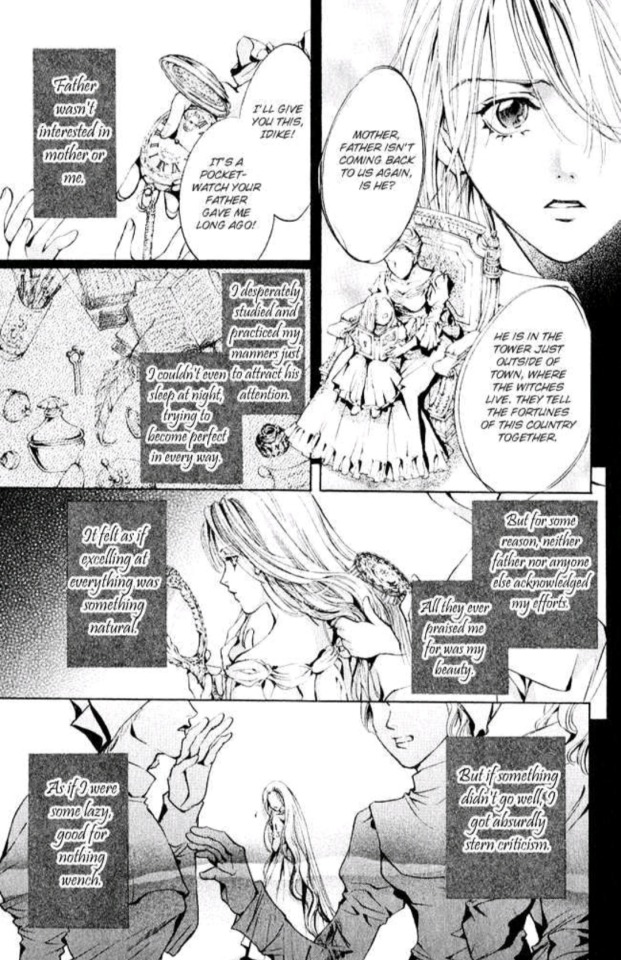
What an interesting re take of the story
3 notes
·
View notes
Text
Yes Virginia, The Nazis Were Fascists - Part Three
(this is part three of a continuation of a discussion we've been having with an Anon who challenged us to define fascism. In our previous response, we provided Anon with a photo of a poster from the United States Holocaust Memorial Museum, a bullet list from Yale professor Jason Stanley, quotes from William Reich, Ludwig von Mises, Harold Nicolson, Franklin D. Roosevelt, Henry A. Wallace, Marcus Garvey, a link to a video breakdown of the subject by Philosophy Tube, and recommendations to read books by historians Mark Bray, Robert O. Paxton, Umberto Eco, and Hannah Arendt - all of whom have published key works on the topic. Anon did not do his homework and instead sent us an immediate reply, informed solely by the two images we included in our response, ignoring everything else we cited. His reply includes some, uhh, pretty incredulous claims. In this post, we crack our knuckles, get someone to hold our beer, and tee off).
ANON: Once again, the nazis wouldn't be considered fascists. They weren't capitalists.
The nazis were absolutely capitalists, Anon, despite what they may have said early on as they rose to power. Historian Robert O. Paxton again:
"Whenever fascist parties acquired power, however, they did nothing to carry out these anticapitalist threats." (Ibid., pg. 10).
"In practice, although fascist regimes did indeed make some breath-taking changes, they left the distribution of property and the economic and social hierarchy largely intact (differing fundamentally from what the word revolution had usually meant since 1789). The reach of the fascist “revolution” was restricted by two factors. For one thing, even at their most radical, early fascist programs and rhetoric had never attacked wealth and capitalism as directly as a hasty reading might suggest. As for social hierarchy, fascism’s leadership principle effectively reinforced it, though fascists posed some threat to inherited position by advocating the replacement of the tired bourgeois elite by fascist 'new men.'” (Ibid., pg. 141) The crony capitalism enacted by the nazis let brute force to the profit motives of their capitalist allies that helped them seize power, by providing capitalists with murderous anti-union violence, valuable assets seized from Jews and other "enemies of the state," lucrative government contracts doled out based on a company's devotion to Hitler, and slave labour.
ANON: Corporate power wasn't necessarily protected (whatever that means). Labour power wasn't suppressed.
AI: You're plainly wrong on both counts. The nazis developed an economic system called "crony capitalism" where wealthy business owners were given tremendous advantages if they allied with and supported the nazis, including repression of trade unions, rewarding resources looted from competitors, and the use of slave labour. Major German corporations like Krupp and I.G. Farben did exactly that. "Businessmen contributed hugely to the new Nazi authorities and set about accommodating themselves to a regime that would reward many of them richly with armaments contracts, and all of them by breaking the back of organized labor in Germany." (Robert O. Paxton, The Anatomy of Fascism, pg. 100).
Another big perk for corporations supporting the nazis was their promise to violently repress labour unions. In 1933, the nazis outlawed independent labour unions and forced workers to join the nazis' own rat union. They also froze workers' wages. Some of the first people sent to nazi concentration camps were union leaders like Ernst Thälmann - thousands of union activists were tortured and executed between 1933 and 1945.
94 notes
·
View notes
